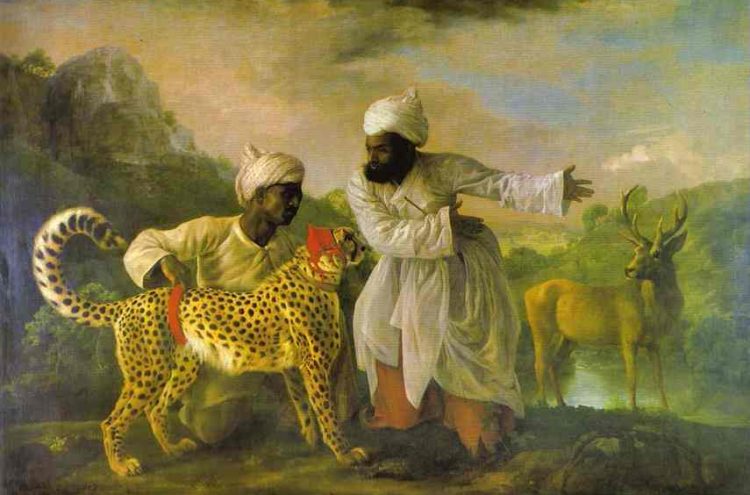
Manchester Art Gallery: Collections
Manchester Art Gallery and The Gallery of Costume are home to the city’s world-class art collection. Their collections include over 25,000 objects of fine art, decorative art and costume, developed over 200 years and still growing.
Fine Arts – Manchester Art Gallery is best known for its collection of works by 19th century British artists, particularly the Pre-Raphaelites. However the fine art collections are not exclusively British and contain material from the 1400s to the present day. Altogether there are over 14,000 works, including 2,000 oil paintings and 350 sculptures, as well as drawings, watercolours, prints, posters, photographs and medals.
The nucleus of the fine art collection was transferred from the Royal Manchester Institution to the new City Art Gallery in 1882. From the outset there was a commitment to acquiring contemporary art, hence the strength of the Victorian and Edwardian collections.
The modern British collection up to the end of the Second World War is equally significant due to the judicious collecting of the first director, Lawrence Haward, from 1914 to 1945, and the gift of Charles Rutherston’s extensive modern art collection in 1926. Since 1945 the holdings of historic British art have been augmented by the purchase of major paintings by Gainsborough, Stubbs and Turner amongst others.
Under the directorship of Timothy Clifford, 1978-1984, the European Old Masters collection was transformed by the Assheton Bennett bequest of almost a hundred paintings, mainly by 17th century Dutch and Flemish artists, and a number of ambitious purchases, including works by Algardi, Claude, Bellotto and Canaletto.
More recently, the Galleries have acquired work by contemporary British, European, African, American and Asian artists – a reflection of the increasing internationalism of the art world and the city itself.
You can Search the collection, and see what’s on at the gallery by clicking on these links.
Craft & Design – Dating from 1,100BC to the present day, the collection comprises over 13,000 objects, about a quarter of which are ceramics. The core collecting areas also include glass, metalwork and furniture. However, early collecting also included antiquities, arms and armour, coins, enamels, ivories, carved jades, doll’s houses and related items. Although most of the material is British or European, there are objects from every continent except South America, with significant groups from China and Japan.
The collection has developed since the 1880s through gifts, bequests and purchases, hence its broad ranging and eclectic character. It becomes more coherent when viewed as an illustration of changes in the style and consumption of handmade and industrially produced decorative arts in Britain from the 1600s. The strongest areas of the collection date from 1600 to 1820 and these also represent pre-industrial craft practice and the transition from workshop to factory production.
Since the first purchase of Minton Pottery from an exhibition in 1884, the Galleries have shown a strong interest in the contemporary and so the late Victorian and modern collections are of high quality although not as comprehensive as the pre-Victorian. From 1925 to 1939, whilst developing the studio pottery collection, Lawrence Haward also created a pioneering Industrial Art Collection by sourcing contemporary material directly from manufacturers and British industries fairs.
This dual interest in craft and industrial design continues with recent purchases in both areas focusing on innovation in design, use of materials and practice. In particular there has been a new emphasis on works that blur the traditional boundaries between fine art, craft, and design.
Costume – Manchester City Galleries has one of the largest British collections of fashion and clothing, housed in a separate building, Platt Hall, two miles south of the city centre. Please see separate post.
Caption: A Cheetah and a Stag with Two Indian Attendants, George Stubbs, c1764. Wikimedia Commons
For more information on temporary exhibitions please see separate posts.
Further information
- Opening times: open 10am–5pm, Wednesday–Sunday
- Location Manchester Art Gallery, Mosley Street, Manchester M2 3JL
- How to get there: By Metrolink – St Peter’s Square or Market Street stations are the nearest Metrolink stations-both are on the Altrincham and Eccles lines; By Bus – Nearest bus stops are in Piccadilly Gardens or on Princess Street; By Train – to Manchester Piccadilly, Manchester Oxford Road or Manchester Victoria stations – take the Metrolink from Victoria or Piccadilly (Altrincham or Eccles direction) to Market Street or St Peter’s Square; By Car – parking is available at the NCP car parks on Chepstow Street, Faulkner Street or Sackville Street – all are within five minutes of the gallery
- Further information 0161 235 8888


